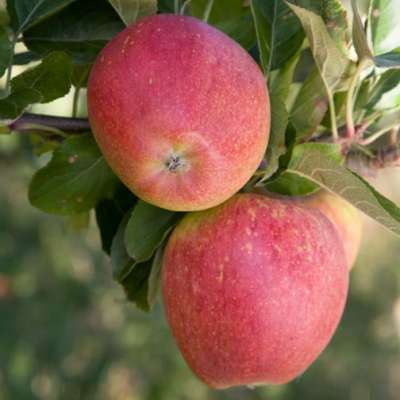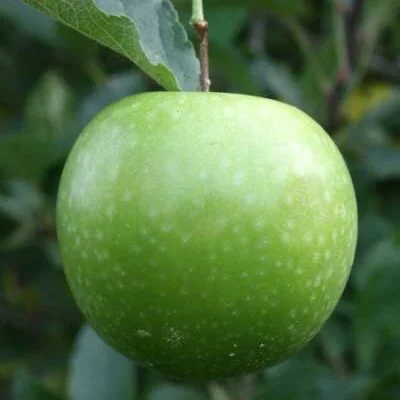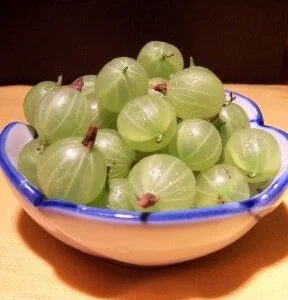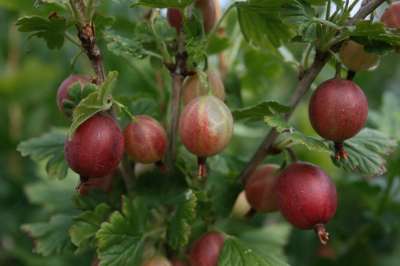Your basket is currently empty!
THE ESSENTIAL GUIDE TO COLUMN FRUIT TREES – COLUMNS, BALLERINA , PILLAR & MINARETTE FRUIT TREES
With today’s modern smaller gardens it is hardly surprising that these, the smallest most space-saving fruit trees of all, have recently very much come to the fore. Although the easiest fruit trees to grow and maintain, there is a general lack of understanding between the options available and how best to grow them. First lets outline the different ‘brand name’ and descriptive terms that abound.
COLUMN FRUIT TREES – ‘SUPERCOLUMNS’
Our personal favourite, the supercolumn tree is very easy to maintain with simplified pruning just once a year, and is available in a wealth of different varieties, encompassing apples both coking and dessert, pears, plums, gages, damson and cherry! Whether your preference is for modern day disease resistant varieties, or older traditional and heirloom varieties, they are all well catered for. The slender upright habit will reach 7-8’ [2 metres or so] but can be kept a little shorter with annual pruning of the main leader. The width is just 18”. Ideally suited to container growing or garden. With the advantage of more sunlight penetrating all around the tree, the fruits are brighter and sweeter. Supercolumns are always grown on the smallest available rootstocks – this is M27 for apples, Quince C for Pears, Pixy for Plums, Gage and damson, and Gisela 5 for the cherries. By grafting the trees on to these small rootstocks we can ensure that vigour is reduced which is what you want for a space saving tree. The fruits are produced on short side branches which arise from the main trunk. The trees do not really need supporting unless the aspect is exposed and windy, often they are grown as self supporting or with just a stout bamboo cane to tie them to until properly established.
MINARETTE FRUIT TREES
Are very similar to ‘Supercolumns’ although the range is a little smaller. The general cultivation and pruning principals are the same. The range covers a good variety of apple, pear, plum and cherry. Suitable for containers and the open ground. The dimensions are fairly similar to supercolumns but sometimes they are grafted on to slightly larger growing root stocks. Minarette and supercolumn trees will come in to bearing quite quickly after planting. Sometimes you will get fruits the first summer even, with trees settling to regular cropping from year two.
BALLERINA TREES
The original and most famous of all the columnar type fruit trees, these are the ones that started it all. However by todays standards they have flaws and have largely been superseded. As they tend to be grafted only onto vigorous root stocks, the growth, although narrow and unbranched, can be quite vigorous, tall, and ungainly. The range is restricted only to modern-bred apple varieties, and these are varieties specific to the Ballerina type, they aren’t existing or known varieties that you will have come across before. They will grow to 10’ or more. Suited only to larger containers such as a half barrel or similar, or the open ground. Ballerina trees need no pruning at all and this is their main attribute. Varieties include Polka, Waltz and Flamenco.
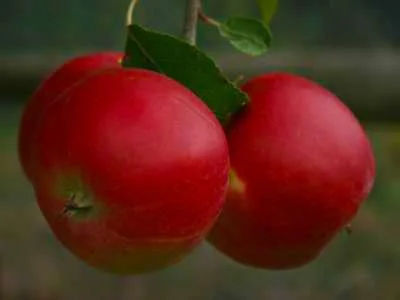
PILLAR FRUIT TREES
Is a descriptive term that encompasses the columnar growing method and is not actually a varietal term or brand name and can apply to any of the above.
USES AND APLICATIONS FOR COLUMN FRUIT TREES
Because they are flexible and adaptable, you can definitely let your imagination run free! And, with such a close planting distance, you might find your options are much greater than you first realised!
Growing in pots and containers
A container of 20 litre capacity is ideal and using a loam based compost such as John Innes no 3, the Supercolumn and Minarette trees will do very well indefinitely. Great for use on the patio or even a balcony. All types of apple, pear, plum, gage, damson and cherry are suitable. They can be grown in the same container throughout their life, after 4 years or so, re pot in to the original container after having removed some of the old soil and teased out the roots, repot with fresh compost. Regular feeding with sea weed extract, or by inserting a slow release fertiliser tablet, will improve yield and health considerably. Regular watering is of course a must from April to Ocrtober. During the winter months it should not be necessary to water. The trees can ben left outside all winter with no protection necessary, although you might want to stand them in a sheltered corner over winter simply to stop them blowing over so frequently.
A FRUITING HEDGE OR SCREEN
Using the optimum 18” planting distance it is quite possible to easily let the trees meet and slightly grow together forming a fruitful and easily maintained hedge or barrier which can be kept to 7’ in height or so. A wide range of varieties can be grown to suit all needs and it is also a very wildlife friendly part of the garden. Great for a perimeter hedge, or to divide the kitchen garden or allotment. Pruning can be a little less formal, in commercial applications the hedge is simply clipped back with shears once in the late summer.
The Fruiting arch
Planted either side of an arch and trained over to meet in the middle, these are the easiest trees to fulfil such a use. Used as a walkway, tunnel, arbour or even around a door, the wonderful scented blossom that turns to a magical array of tempting fruits is a very attainable dream.
As a row or avenue
These trees, with their simplified and elegant upright column formation are perfect for lining a drive or path. Plant not less than 20” apart, to your own specification.
In the mixed border
These trees are ideal grown in the border amongst flowers or herbs, or in the veg patch. Because they cast little or no shade it is easy to plant beneath them. With their simple elegant habit they are attractive, especially when seen in blossom or bedecked with fruit.
Planted against wall and fence
Being broadly similar to the traditional cordon style, these are ideal grown actually on a wall or fence, or planted a few inches in front of it. Because they can be grown self supporting, they can be used on shorter walls and fences which would not accommodate a traditional cordon, fan or espalier tree.
HOW TO GROW COLUMN FRUIT TREES
A Super Column is a specially selected tree that comes to you ready for planting. Some trees have short fruiting spurs that have been pruned back, other trees will have none at all and are straight columns with quality fruit buds. At the time of planting the form varies with the variety chosen. After the first year, all trees look alike and grow in a similar manner.
Plant the tree as it is when it arrives. You do not have to reduce the height unless you wish to.
Prepare the soil as detailed in the cultural guide for fruit trees at the end of our main catalogue. This involves digging it over to a fine tilth and removing all weeds which might otherwise compete with the new trees as they grow during the first season. Growmore or Bonemeal are good fertilizers to add to the planting area before planting. Once a fine tilth has been achieved the trees can be planted in a hole large enough to comfortably take the roots without cramping them. They should be set to a depth so the uppermost roots are covered by about 2” of soil, If you plant too shallowly the roots may dry out, and if planted too deeply, the graft may rot or fruiting may be delayed. Water the trees in after planting to settle the soil around the roots. If planted over winter you should not need to water again, but if they are planted during the growing season regular watering is necessary each day until established, which can eb several weeks. Apply water to the base of the tree with a hose.
If you are growing a range of different fruits – ie. Apple, pears, plums and cherries for example, it does not matter how you plan the planting, full pollination will be achieved as long as the trees are in the same vicinity.
The trees will need staking throughout their life for the best results, but this does not have to be a large post. A normal rose stake or reasonable thickness 6ft bamboo cane is quite adequate unless you growing area is very exposed.
As the trees grow during the summer you will find that small side shoots are produced. If you have these they will grow into branches so they must always be pinched back to maintain the simpler columnar form.
This simple pruning is always carried out in the better summer months and you will normally start in late June in the South of the country or July in the North.
If you watch the trees from June onwards it is soon obvious what has to be done. Once the new side growths are 9”-12” long they need your attention. You can pinch the soft shoots out with your finger and thumb or use secateurs.
Shorten the new growth back to about 4”-5” cutting just above a bud. That is all that has to be done. Any shorter growths that are less than 9” are left until next time. It is best to check your trees about every three weeks until the seasons growth has finished in the early Autumn.
Always try to shorten the growths to about the same length and this will maintain the perfect column.
The leader itself should also be shortened by a few inches as this induces better spurring lower down. This should be done every season in late Summer. A new leader forms just below where you cut. Once the trees are fully established in 4-5 years then it largely becomes unnecessary.
If fruits are produced the first summer after planting there is no need to remove them as you would with an ordinary tree. Super columns are capable of fruiting from the first year and, depending on the variety will often settle down for regular heavy cropping from the second or third year onwards. Full cropping is often achieved by the fourth year.
Growing in containers is a simple matter, choose a container of 20 litre capacity and use a loam based proprietary compost, never use top soil. You should not need to stake the trees if they are being grown in containers. Trees grown in pots should be watered every day from April to October and this is especially important whilst in fruit as it encourages the fruits to swell and reduces the chances of some fruits being shed whilst immature.



